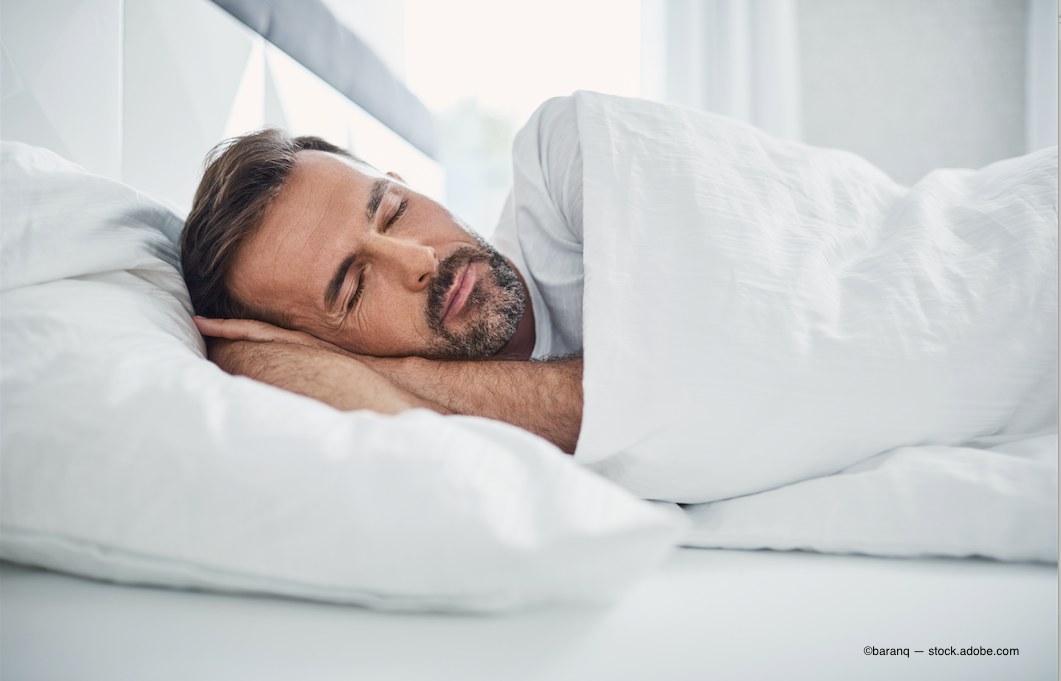Article
The Problem of Measuring Restorative Sleep
Author(s):
A number of tools that clinicians can use to better understand their patients’ sleep quantity and quality.

The relationship between sleep and neurology can be a complicated one; neurological disorders can cause sleep disruption and inadequate sleep can exacerbate neurological disorders and cause neurological problems. While many patients concern themselves with sleep quantity, sleep quality can be just as important. When sleep quantity and sleep quality are impacted, patients may experience a lack of restorative sleep.
Unfortunately, there is no easy way to determine if sleep is restorative. Indirect approaches to assess the restorative effects of sleep rely on sleep quantity and quality measurements. For example, polysomnograms can record the total duration of sleep, the duration of each sleep stage, and the duration of latency periods to objectively measure sleep quantity; sleep quality may be extrapolated from this data.
Sleep quality is often assessed via subjective methods, with the Pittsburgh sleep quality index (PSQI) serving as the most commonly used tool.
Determining whether sleep achieves its restorative purpose remains challenging. New measures of restorative sleep are emerging. Like the PSQI, these methods also rely on subjective patient responses.
Measuring sleep using electrical data
There are two leading methods to measure sleep quantity-polysomnography (PSG) and actigraphy. Neither of them directly measure sleep quality or assess whether the sleep achieved restorative effects.
PSG, a method established years ago, measures several physiological components including:
• Electroencephalogram (EEG) response to assess brain wave activity, which identifies the sequence and duration of sleep stages;
• Alpha-EEG activity during NREM sleep, which are characteristic of sleep deprivation;
• Extra-ocular muscle movements (EOM);
• Muscle movements using electromyography (EMG); and
• Vital signs such as heart rate, respiratory rate, and oxygen levels.
Actigraphy is a technique that involves wearing a non-intrusive device (similar to a watch) to detect physical movements. Using an algorithm, the device is programmed to distinguish wake from sleep and to identify sleep stages, all based on physical movements.
There are advantages and disadvantages to each method. PSG, which provides more data, is often disruptive to patients and can thus affect sleep and may skew the results. Actigraphy provides less data and, while it correlates well with PSG, is more likely to produce false positive or false negative results.1
Pittsburgh sleep quality index
The most widely used method of assessing sleep quality is the Pittsburgh sleep quality index (PSQI). Developed in 1989, the PSQI is a 19-item questionnaire that asks the patient to rate sleep. Questions cover issues such as how long it takes to fall asleep and daytime functioning. Although this method is considered valid and reliable,2 it is limited in that it provides subjective data. While it is the most well-established method of assessing sleep quality, it does not directly measure or assess the restorative aspects of sleep.
Measures of restorative sleep
To date, efforts to create a measure of restorative sleep have relied on patient questionnaires. For instance, recognizing that there were few psychometrically sound instruments to assess perceptions of the restorative or inadequate properties of sleep, a group of researchers developed the Restorative Sleep Questionnaire (RSQ). The RSQ includes self-report items related to various aspects of the restorative quality of sleep. RSQ results differ between people who experience normal sleep and people who have PSG-confirmed sleep problems, such as difficulty initiating or maintaining sleep.
A study assessing its validity showed that the responses of the control group indicated that their sleep was more restorative than participants who were diagnosed with sleep disorders, with a value difference of approximately one standard deviation.3
Overall, the RSQ measures correlate well with PSG, including sleep latency, total sleep time, sleep efficiency, wake time after sleep onset, and total wake time, suggesting that this subjective tool can be a good way to evaluate restorative sleep.
Concluding thoughts
There is no perfect way to measure restorative sleep. Fortunately, there are a number of tools that allow clinicians to better understand their patients’ sleep quality and quantity, which provides a snapshot of their patients’ sleep and sleep patterns. Armed with that information, clinicians can make better treatment decisions.
References:
1. Quante M, Kaplan ER, Cailler M, et al. Actigraphy-based sleep estimation in adolescents and adults: a comparison with polysomnography using two scoring algorithms.Nat Sci Sleep. 2018 Jan 18;10:13-20.
2. Mollayeva T, Thurairajah P, Burton K, et al. The Pittsburgh sleep quality index as a screening tool for sleep dysfunction in clinical and non-clinical samples: A systematic review and meta-analysis. Sleep Med Rev. 2016 Feb; 25:52-73.
3. Drake CL, Hays RD, Morlock R, et al. Development and evaluation of a measure to assess restorative sleep. J Clin Sleep Med. 2014;10:733-741.


